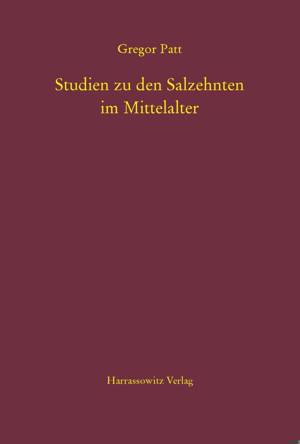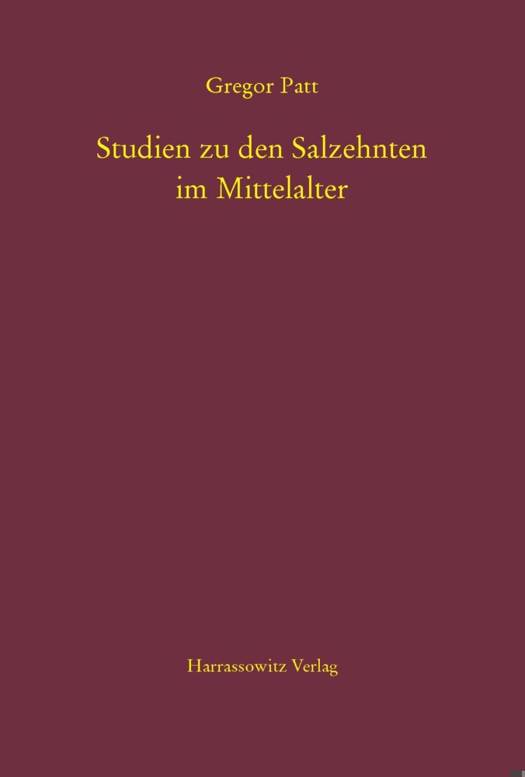
- Retrait gratuit dans votre magasin Club
- 7.000.000 titres dans notre catalogue
- Payer en toute sécurité
- Toujours un magasin près de chez vous
- Retrait gratuit dans votre magasin Club
- 7.000.0000 titres dans notre catalogue
- Payer en toute sécurité
- Toujours un magasin près de chez vous
Description
English summary: As one of the oldest taxes in the world, the church tithe has had a particular importance for the development of church, society, and economy in the Middle Ages. Quickly after its introduction in the 8th century, the tithe developed numerous forms, which were often only distinguished from other duties and payments with difficulty. One of the most important forms of the tithe was the distinction between the tithe from the landlord's own land (Latin: "terra salica, German: "Salland") and the tithe on the other properties of the dependent peasants on that land. Based on the lands from which they were levied, the tithes of the lord's own properties were also described as the "Salzehnten." These "salic tithes" are the subject of this dissertation. This study is based on the question about which terms in the sources had a bearing on the tithe laws as they were applied to the landlord's own lands, and how these terms developed from the 9th to the 13th century. Gregor Patt examines which "Salzehnten" were distinguished from other forms of the tithe, to which uses the "Salzehnte" were put, the extent to which the commerce with the "Salzlehnte" underwent significant changes in the course of the Middle Ages or even if the tithe from the lord's demesne could be diverged from lordship to lordship. This comparative study, intentionally in arranged in a interregional manner, offers not only specific details about the function and development of the tithe, but also provides the basis for conclusions concerning other fields of economic, social and church history in the Middle Ages. German description: Dem Kirchenzehnten kommt als einer der altesten Steuern der Welt eine besondere Bedeutung fur die Entwicklung von Kirche, Gesellschaft und Wirtschaft im Mittelalter zu. Bereits unmittelbar nach seiner Einfuhrung im 8. Jahrhundert entwickelten sich zahlreiche Sonderformen, die sich oft nur schwer von anderen Abgaben und Leistungen abgrenzen lassen. Eine der bedeutsamsten Sonderformen war die Unterscheidung zwischen den Zehnten aus dem von Grundherren selbst bewirtschafteten Land (lat. terra salica, dt. Salland) und der Zehntung des an abhangige Bauern ausgegebenen sonstigen Grundbesitzes. In Anlehnung an das Land, von dem sie erhoben wurden, werden Zehnten von der herrschaftlichen Eigenwirtschaft auch als Salzehnten bezeichnet. Sie stehen im Mittelpunkt der vorliegenden Dissertation. Ausgehend von der Frage, welche Quellentermini einen Bezug zur zehntrechtlichen Sonderstellung des von Grundherren in Eigenwirtschaft betriebenen Landes erkennen lassen, wird ihre Entwicklung vom 9. bis zum 13. Jahrhundert nachgezeichnet. Gregor Patt untersucht, was die Salzehnten von anderen Zehnten unterschied, welcher Verwendung Salzehnten zugefuhrt wurden, inwiefern der Umgang mit Salzehnten im Laufe des Mittelalters Veranderungen unterworfen war oder die Zehntung der Salguter gar von Grundherrschaft zu Grundherrschaft divergieren konnte. Die bewusst uberregional angelegte vergleichende Studie bietet nicht nur nahere Erkenntnisse zu Funktionsweise und Entwicklung des Zehntwesens, sondern lasst auch Ruckschlusse auf andere Gebiete der Wirtschafts-, Sozial- und Kirchengeschichte des Mittelalters zu.
Spécifications
Parties prenantes
- Auteur(s) :
- Editeur:
Contenu
- Nombre de pages :
- 1000
- Langue:
- Allemand
- Collection :
- Tome:
- n° 67
Caractéristiques
- EAN:
- 9783447101608
- Date de parution :
- 31-12-14
- Format:
- Livre relié
- Format numérique:
- Genaaid
- Dimensions :
- 150 mm x 226 mm
- Poids :
- 1813 g

Les avis
Nous publions uniquement les avis qui respectent les conditions requises. Consultez nos conditions pour les avis.






